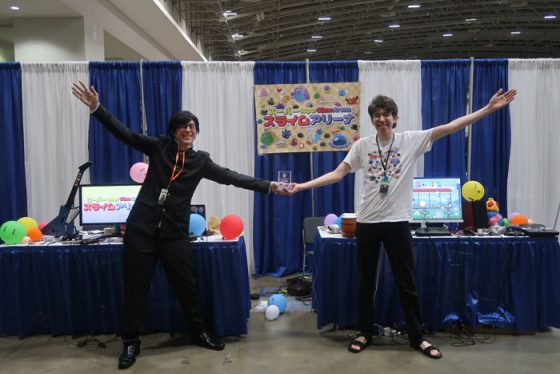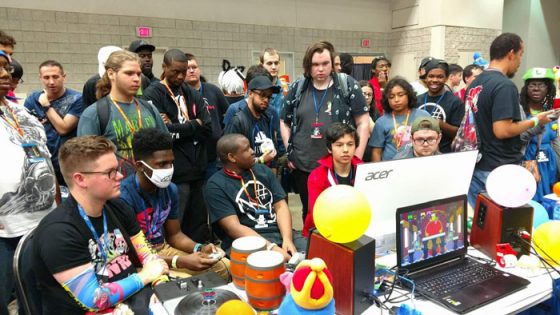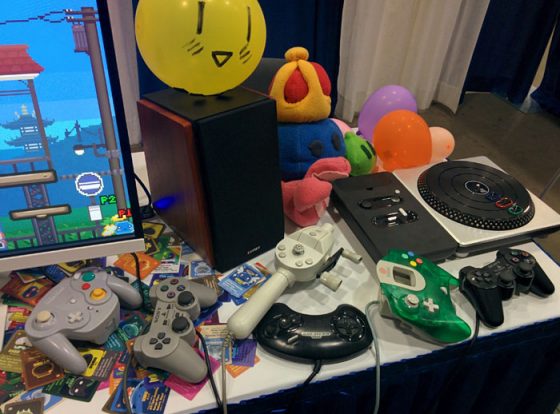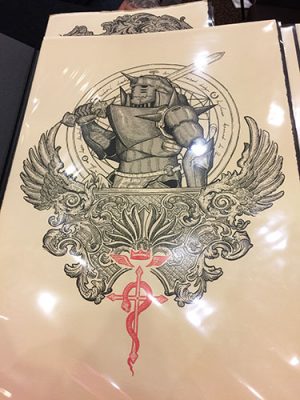While you know me on here as one of Honey’s writers, I am also a game developer who has been working in the industry for over five years now, currently as an indie at my own company, JellyTeam, which released party-fighting game Super Slime Arena early last year and is still actively developing it for the console launch later this year. In this short piece, I’ll be talking about my experience showcasing games at anime conventions, what they offer to developers, and how they compare to gaming-specific events. As a disclaimer, unlike usual, this article is purely based on my personal opinion and experience. Let’s start!
Why Developers Showcase and My Convention Experience.

While it might seem obvious, the biggest reason developers go to conventions is to reach players directly. In this age of massive (over)production, it’s increasingly hard to be discovered, even if your game is fantastic, so conventions offer a “smaller pond” to fight for attention and let you demo directly to attendees. This intimate person-to-person connection can work wonders, especially for small indie teams, since players can see the passion the developers have for their game, ask questions directly to the creators, and experience the game in a context that’s more memorable than watching a trailer or playing a demo at a store or at home.
Showcasing also lets developers get direct feedback on their game, a chance at media coverage, and networking within the industry that could lead to publishing deals, etc.
For my specific experience showcasing, I’ve exhibited at game conventions such as Boston Festival of Indie Games, PAX West, PAX East, GDC, Play NYC, BitSummit, and Dreamhack, along with numerous small indie game focused events and at several anime conventions, namely Otakon and AnimeNEXT.
Anime Conventions and Video Games

Gaming has been a part of anime conventions for quite some time now but it’s only relatively recently that proper game showcases have been part of them to my knowledge. Our first showing at an anime convention was at Otakon 2017 which was also the first time Otakon had a formal game showcase. We were approached by one of the organizers at PreGamer (an event put on by PlayCrafting before PAX East) and were one of the maybe 20 or so games that were part of the first showing and even won the ‘Fan’s Choice Award’ for that year! I think as conventions try to grow and broaden their appeal, formal game showcases will become more and more common over time.
Why Developers Should Consider Anime Conventions
First and foremost, at least as of the time of writing, anime conventions are some of the least expensive ways to get your game into large events. While big conventions like PAX will cost you nearly $2000 for the smallest booth (and increasing every year), anime conventions are more like a couple hundred dollars, making it very easy to cover the cost from selling game keys or merch, even as an indie. While attendee numbers are typically smaller than major game shows, they are still respectable, especially bigger anime conventions like Otakon (around 30,000).
There’s also an overlap between gaming and anime that makes the audience (nerds!) similar. Especially for anime/Japanese-influenced games like Super Slime Arena, your target audience is likely to attend anime conventions and respond positively to your game. Some other things to consider is that you’ll be facing less direct competition, might be eligible for awards like we were at Otakon (which also came with free exhibition the next year!), and can target specific regions more easily that might not have a major gaming convention nearby.
Some big bonus points for me are that if you’re also an anime fan, you’ll have a chance to check out a little bit of the convention (I love going to see anime industry panels or advanced screenings) and will feel less weird about cosplaying characters unrelated to your game. I also find anime cons to be less stressful to exhibit at compared to other conventions, especially big ones, because the atmosphere is more relaxed. It’s about the same level of stress at a big anime con like Otakon as there is at a small, indie-focused convention like BFIG.
Anime Con Negatives
While there’s a lot to like about showing at anime conventions, it’s definitely not the same as game-focused ones and it has its share of drawbacks. I think the biggest one is that networking and media opportunities are way more limited. This isn’t surprising since games are not the main focus of the show and therefore there are fewer developers/publishers/media there for games, but if you’re a small indie looking for a publisher or a chance at major media coverage anime conventions aren’t the best place for that. In a similar fashion, you’ll see fewer players and likely encounter dead spells when popular panels/concerts are happening but I think, overall, the cost-to-exposure ratio can be really good if you have reasonable expectations.
Final Thoughts

Ultimately, you have to decide for yourself whether or not exhibiting at an anime convention is worth the cost and effort but I think if you have a game that’s a good fit for the audience and you are mostly there to get your game out to the public and maybe sell some keys or merch, conventions can be a great place to showcase, and if you’re an anime fan yourself you’ll have even more fun!
If you have any questions for me about exhibiting, my game, etc. feel free to use the comments section below! Would you like to see more recent video games at anime conventions? I hope to write more about exhibiting and being in indie games in the future, so please let me know if you found this interesting! As always, stick around Honey’s for more of all things awesome, gaming and otherwise!
Recommended Post


